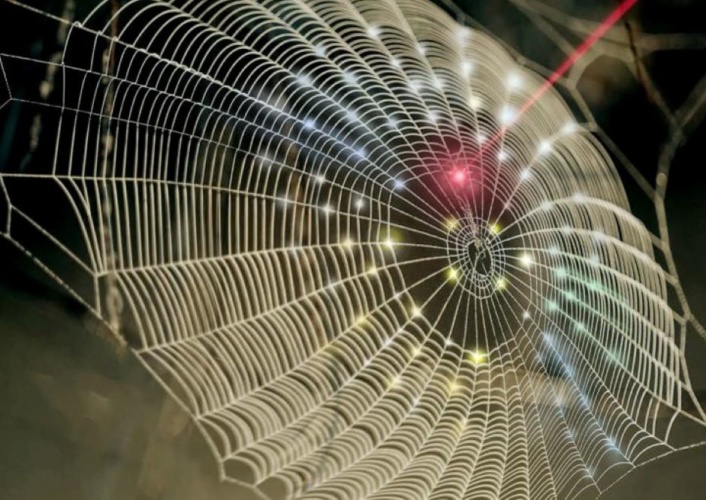
According to Chi Hwan Lee, a Purdue assistant professor of biomedical engineering and mechanical engineering, the team employed the unique fractal design of a spider web for the development of deformable and reliable electronics that interface with any 3D curvilinear surface.
Diving bell spiders inspire ‘unsinkable’ metallic structure
"For example, we demonstrated a hemispherical, or dome-shaped, photodetector array that can detect both direction and intensity of incident light at the same time, like the vision system of arthropods such as insects and crustaceans," he said in a statement.
The Purdue technology uses the structural architecture of a spider web that exhibits a repeating pattern.
Lee said this provides unique capabilities to distribute externally induced stress throughout the threads according to the effective ratio of spiral and radial dimensions and provides greater extensibility to better dissipate force under stretching. Lee added it can tolerate also minor cuts of the threads while maintaining overall strength and function of the entire web architecture.
"The resulting 3D optoelectronic architectures are particularly attractive for photodetection systems that require a large field of view and wide-angle antireflection, which will be useful for many biomedical and military imaging purposes," said Muhammad Ashraful Alam, the Jai N. Gupta Professor of Electrical and Computer Engineering.
Alam said the work establishes a platform technology that can integrate a fractal web design with system-level hemispherical electronics and sensors, thereby offering several excellent mechanical adaptability and damage-tolerance against various mechanical loads.
"The assembly technique presented in this work enables deploying 2D deformable electronics in 3D architectures, which may foreshadow new opportunities to better advance the field of 3D electronic and optoelectronic devices," Lee said.
This work, supported by the US National Science Foundation and the US Air Force Research Laboratory, is published in Advanced Materials.










Comment: Industry must prioritise environmentally responsible adoption of Gen AI
The new Chinese DeepSeek AI start-up that was announced recently and sent shockwaves through the tech industry - and their share price tumbling -...